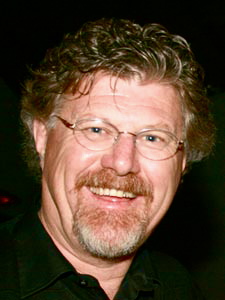“For fourteen thousand years we have been heading for chaos. From the first settlement, the first town, the first city. So slowly that no one noticed it. But that’s changed. It’s pushing up like a tide, everywhere…The chaos is inevitable…Can you afford to ignore it? Or should you utilize the chaos to escape it?”
![]() Once again, Deon Meyer creates a vivid and sometimes frightening look at life in contemporary South Africa, which serves as the background for a real can’t-put-it-downer of a thriller. In the course of his six previous novels, each of which has been more exciting than the previous one, he has continued to expand his plotting and characters. This is his most complex and intricate novel yet, filled with twists and ironies and a series of surprises in the conclusion that make it all work. Unlike most of his previous novels, however, this one is divided into four separate sections, each of which develops independently from the others, like individual novellas, with little to connect them until late in the novel. What the reader knows from the outset is that South Africa’s Presidential Intelligence Agency (PIA) has uncovered a plot which suggests that militant Muslims are planning a takeover of the country with the aid of violent gangs and disaffected youth from the poorest neighborhoods of Capetown. Since the PIA itself is threatened with the prospect of its absorption into a national super-intelligence agency, they are sometimes overly zealous in promoting their own interests.
Once again, Deon Meyer creates a vivid and sometimes frightening look at life in contemporary South Africa, which serves as the background for a real can’t-put-it-downer of a thriller. In the course of his six previous novels, each of which has been more exciting than the previous one, he has continued to expand his plotting and characters. This is his most complex and intricate novel yet, filled with twists and ironies and a series of surprises in the conclusion that make it all work. Unlike most of his previous novels, however, this one is divided into four separate sections, each of which develops independently from the others, like individual novellas, with little to connect them until late in the novel. What the reader knows from the outset is that South Africa’s Presidential Intelligence Agency (PIA) has uncovered a plot which suggests that militant Muslims are planning a takeover of the country with the aid of violent gangs and disaffected youth from the poorest neighborhoods of Capetown. Since the PIA itself is threatened with the prospect of its absorption into a national super-intelligence agency, they are sometimes overly zealous in promoting their own interests.

Part I, which takes place between July and September, 2009, introduces Milla Strachan Lombaard, a woman in her mid-thirties who escapes her abusive marriage and finds a job as a “journalist” for a government agency, reading reports and writing summaries of them. She soon discovers that she is working for the Presidential Intelligence Agency, which is investigating the Supreme Committee, a group working to establish an Islamic state in South Africa based on Iran’s model. The PIA has discovered that some members of the Supreme Committee have been talking with Johnson Chitepo, said to be the right hand man of Robert Mugabe in Zimbabe, both of whom have acquired an enormous stash of diamonds from their clandestine dealings with the owners of the Mbuji-Mayi mines in the Congo. The Agency fears that these diamonds will be transported through South Africa and sold abroad by a member of the Supreme Committee, who will take a huge cut from the profits to pay for the planned revolution in South Africa.
Part II, from September, 2009, begins a whole new set of issues. Meyer reintroduces Lemmer, his flawed continuing character from Blood Safari, and his lover Emma le Roux, who have been living happily in the rural countryside while Lemmer works for Body Armour, a company which provides bodyguards to those who need them. Lemmer himself tells the story in this section, and though his First Law has always  been “Don’t Get Involved,” he eventually accepts a private commission to fly to Zimbabwe, meet a truck transporting two rare black rhinos, and smuggle it in to South Africa, where a local man has a private game reserve. An attempted hijacking brings out Lemmer’s dark side, reminding us that he can be a dangerous man.
been “Don’t Get Involved,” he eventually accepts a private commission to fly to Zimbabwe, meet a truck transporting two rare black rhinos, and smuggle it in to South Africa, where a local man has a private game reserve. An attempted hijacking brings out Lemmer’s dark side, reminding us that he can be a dangerous man.
Part III, from mid-September to mid-October, 2009, returns to the story of Milla, who is in love with someone she has met outside her PIA job. Further PIA investigation of members of the Supreme Committee suggests that critical armaments may be smuggled into the country from the Middle East by way of Namibia very soon, and as Milla pursues her much-deserved happiness, Meyer provides some of the novel’s biggest surprises. Part IV introduces Mat Joubert, formerly of the South African Police Organization, now a private detective, who has been hired by Tanya Flint, a distraught young wife whose law-abiding husband has vanished. This section also reintroduces Det. Benny Griessel, who appeared in Thirteen Hours, as local police are sought by Joubert to help find Flint’s husband.

If all this seems unusually complex and involving many characters with disparate interests, it is. Roughly sixty characters appear in the novel, some with hyphenated names, unusual spellings, and additional nicknames, and as the reader has no idea which of these characters will prove important to the conclusion, it is impossible to ignore any of the names as irrelevant. I would not have been able to keep track of the people and the action in four different parts (and contexts) if I had not kept a running list of characters as they were introduced, and I wish the publishers had included a cast of characters, at least for those characters important enough to appear in more than one section of the novel. Even as late as page 475 of this 537-page book, I was still wondering how the author was ever going to connect all the characters and the unusually large number of plot complications.
The novel never fails to excite, however, once one gets past the introductory pages, and though there are many red herrings and plot twists which are sometimes implausible and dependent on convenient coincidence, the author’s talent at creating suspense keeps one reading quickly. In choosing to  develop four separate plots, with casts of only-rarely overlapping characters, Meyer actually seems to be deliberately recreating the problems of security agencies in South Africa and other countries in which “homeland security” means dealing with many different kinds of issues, often by competing agencies. Protecting turf and failure to share information, even with international agencies, obviously allow dangers to grow, and as we see here, often lead to the mischaracterization of people, the dangers they pose, and the actions they take.
develop four separate plots, with casts of only-rarely overlapping characters, Meyer actually seems to be deliberately recreating the problems of security agencies in South Africa and other countries in which “homeland security” means dealing with many different kinds of issues, often by competing agencies. Protecting turf and failure to share information, even with international agencies, obviously allow dangers to grow, and as we see here, often lead to the mischaracterization of people, the dangers they pose, and the actions they take.
Ultimately, most of the chaos we see illustrated in the novel is resolved by the conclusion, but the author also seems to suggest that real chaos may be the continuing watchword of real life. In what may be a dark warning to the free world, one character describes chaos in America, in Europe, and South Africa as “ever faster, ever closer. In ten years, twenty, maybe fifty, [chaos] is going to swallow us up…You will regret that, yet, you will still wonder whether it is better to be blissfully ignorant…[Some of us] learned from the chaos, so [we] could use it.”
NOTE: ALSO by Deon Meyer: BLOOD SAFARI (2007), THIRTEEN HOURS (2009), COBRA (2013)
Photos, in order: The author’s photo by Naomi Bruwer is from http://www.litnet.co.za
The photo of rough diamonds from the Mbuji-Mayi mines in the Congo, along with a story about them, may be found here: http://www.newint.org. The photo is by Marc Schlossman/Panos.
Walvis Bay in Namibia, where a ship with “precious cargo” is expected by the Supreme Committee: http://www.challengeandadventure.com
Lion’s Head in Capetown, where Milla walks with her lover, is found on http://en.wikipedia.org
